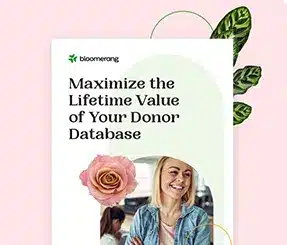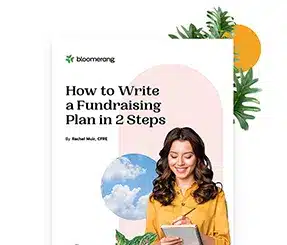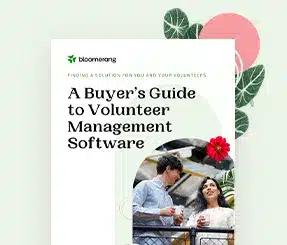When They're Just Not That Into Your Event—And Your CRM Knows Why


Full Platform Overview Chat With Us



Full Platform Overview Chat With Us




You planned the perfect night—killer venue, good wine, auction items, a rousing speech or two. The guests showed up. The vibe was solid. And then? Silence. No new gifts. No new donors. No real momentum.
It’s not you. It’s your event.
Too many nonprofit events run on autopilot—repeated out of tradition, not strategy. They look like a success on the surface. But behind the flowers and follow-up emails, the signs are there: You’re working harder for smaller returns. And the donors you hoped to win over? They’re moving on without a second thought.
Your CRM knows what really happened.
The fundraising event ROI doesn’t lie.
It’s time to stop misreading the room—and start planning with purpose.
Let’s be honest: some events stick around because they’ve always been there. They feel safe. Familiar. Your board loves them. Your team can plan them in their sleep.
But that doesn’t mean they’re working.
Gala grossed six figures last year? Great. But if your net revenue is razor-thin and your staff is limping into Q2, that’s not a strategy—it’s a sacred cow.
A sacred cow is the event that’s outlived its impact but keeps grazing on your resources because no one wants to be the one to say, “Is this still worth it?”
We justify it with phrases like “signature event” or “great visibility.” We point to the photo gallery, the RSVPs, the applause. We measure performance in attendance, not outcomes. But if the follow-up flops and the gifts don’t come, what exactly are we celebrating?
Here’s the truth: not every tradition deserves to be treasured. Some need to be questioned. Others reimagined. A few? Retired entirely.
Because clinging to a beloved but underperforming event doesn’t make you loyal. It makes you less effective.
You’ll spot it when the same names show up, the same work gets done, and nothing new follows.
And your CRM already knows it.
Let’s take a closer look.
Say your event grosses $100,000. Cue the board’s applause and a round of Chardonnay.
But now, let’s look at the full cost:
That’s a 29.9% ROI, or $0.77 spent for every $1 raised. That’s well above the national average—which typically hovers around $0.50—and that’s before you factor in retention or conversion rates.
Events feel exciting. But if you’re not accounting for all your costs in your nonprofit event evaluation—especially indirect costs—you’re likely giving yourself an inflated sense of success. You might be working harder than you need to for a smaller return than you think.
Let’s be real: some events are running on fumes.
They look fine on the surface—well-attended, well-loved by the board, maybe even a few big-ticket auction items. But if they’re not delivering the right outcomes, you’re pouring energy into something that just isn’t delivering.
You’ll know it’s time to rethink when:
If any of this sounds familiar, it’s time to pause and ask: Is this event actually serving your strategy—or just eating up your time?
You saw a packed room. Your CRM saw who showed up late, left early, and never opened another email.
Because attendance doesn’t equal engagement. Behavior does.
Your CRM is more than a guest list or gift tracker—it’s an insight engine. It knows who’s leaning in, who’s drifting away, and who might be ready to take the next step.
Look for:
When you start treating event data like donor intelligence, everything changes. You stop planning by gut feel and start tracking outcomes.
And that’s where the real ROI begins.
📘 Want more insights like this? Our guide, Reading the Room: Using Donor Data to Plan Events breaks down how to evaluate your events with purpose, rethink outdated traditions, and use your data to drive smarter follow-up.
Butts in seats don’t mean you nailed it.
Donor engagement isn’t a vibe. It’s a measurable outcome. And yet, only 37% of fundraisers track what happens after the event—and just 35% say they value post-event engagement at all.
That’s a miss.
Because clicks, shares, survey responses, follow-up gifts—that’s where the real story lives. That’s how you know whether someone just came for the wine or left thinking about their next gift.
Here’s what donors actually want:
If your event ends when the band packs up, you’re missing your biggest opportunity: turning moments into momentum.
You don’t have to toss the whole event. But if it’s not helping you build relationships or move donors more deeply into your mission, it’s time to rethink it.
Start here:
These aren’t minor tweaks. They’re the difference between a party and a pipeline.
A packed house looks great on Instagram. But if they’re just not that into your mission—what are you really celebrating?
This is where fundraisers can fall into the trap of mistaking popularity for connection. Your CRM can tell you the difference.
It’s not just a gift tracker—it’s an engagement engine.
Every click, reply, referral, and RSVP tells you something. So does silence. Use that data to spot who’s leaning in—and who’s quietly ghosting your mission.
Look for:
These are signals. Not just outcomes. If you’re not looking for them, you’ll miss the real return on your event.
And that means your events should do more than keep traditions alive—they should move your mission forward.
Evaluating your event’s impact is about more than the numbers. It’s about clarity. Are you reaching the right people? Are you getting results worth the effort? And are you building real momentum—or just keeping the glitter flowing?
When your events are aligned with your goals, everything feels lighter. The stress lifts. The results improve. And you stop planning out of obligation—and start planning with intention.
One last thing: Follow-up matters more than you think.
Most donors want to see impact, not just get a thank-you. If you’re not showing people the story they were part of—or inviting them to take another step—you’re leaving relationships on the table.


Comments